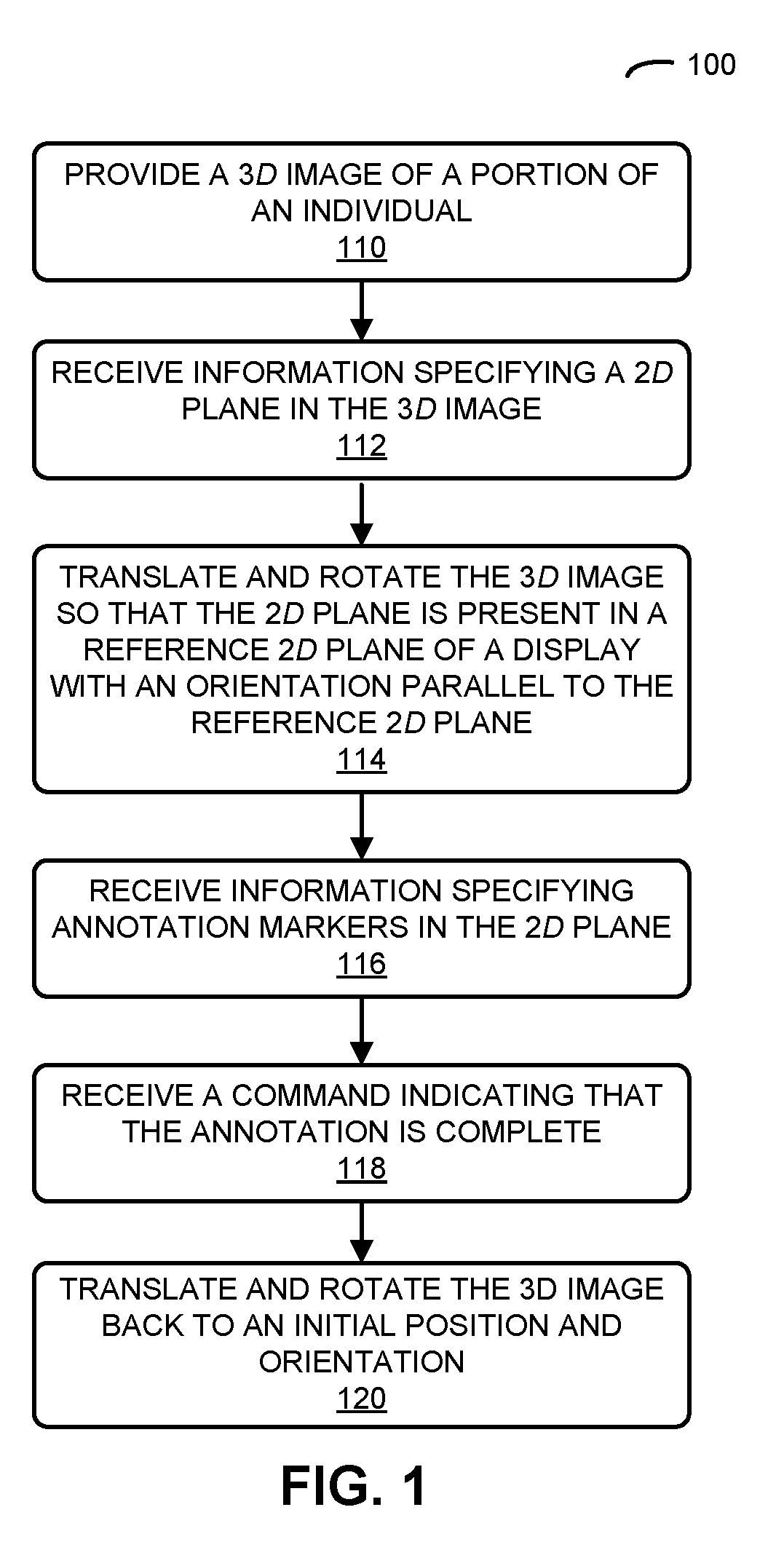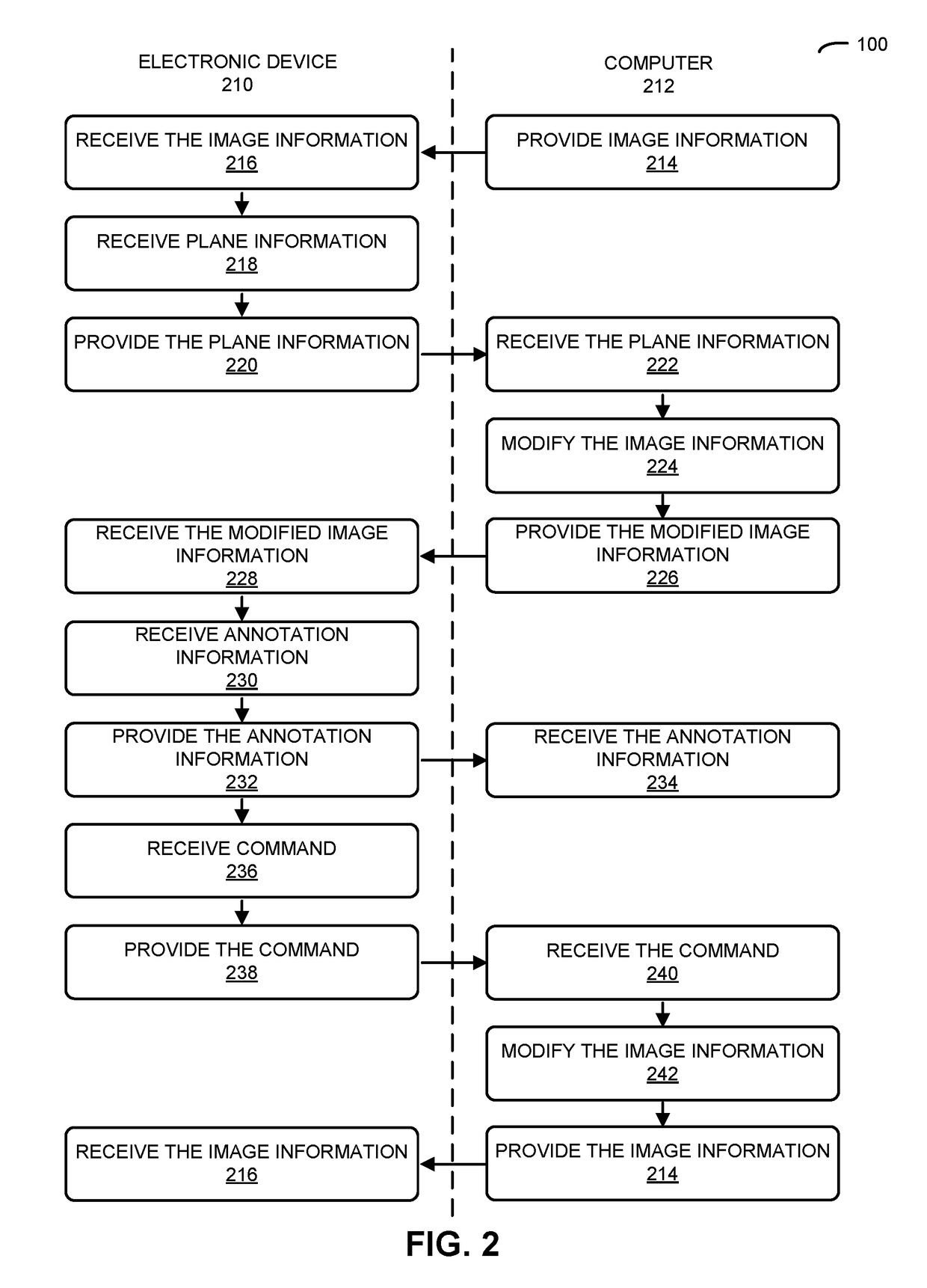Multi-Point Annotation Using a Haptic Plane
a multi-point annotation and haptic plane technology, applied in image generation, image enhancement, instruments, etc., can solve the problems of difficult to distinguish abnormal features from normal anatomical features, difficult to interpret medical images, and difficult to compare medical images, so as to facilitate detailed multi-point annotation of anatomical structures.
- Summary
- Abstract
- Description
- Claims
- Application Information
AI Technical Summary
Benefits of technology
Problems solved by technology
Method used
Image
Examples
Embodiment Construction
[0040]Embodiments of a computer or a computer system, a technique for facilitating detailed multi-point annotation of an anatomical structure, and a computer-program product (e.g., software) for use with the computer system are described. During this analysis technique, a three-dimensional (3D) image of a portion of an individual is iteratively transformed to facilitate accurate determination of detailed multi-point annotation of an anatomical structure. In particular, for a given marker point, in response to receiving information specifying a two-dimensional (2D) plane having an angular position in the 3D image, the 3D image is translated and rotated from an initial position and an initial orientation so that the 2D plane is presented in an orientation parallel to a reference 2D plane of a display. Then, after annotation information specifying the detailed annotation in the 2D plane of the given marker point is received, the 3D image is translated and rotated back to the initial po...
PUM
 Login to View More
Login to View More Abstract
Description
Claims
Application Information
 Login to View More
Login to View More - R&D
- Intellectual Property
- Life Sciences
- Materials
- Tech Scout
- Unparalleled Data Quality
- Higher Quality Content
- 60% Fewer Hallucinations
Browse by: Latest US Patents, China's latest patents, Technical Efficacy Thesaurus, Application Domain, Technology Topic, Popular Technical Reports.
© 2025 PatSnap. All rights reserved.Legal|Privacy policy|Modern Slavery Act Transparency Statement|Sitemap|About US| Contact US: help@patsnap.com



